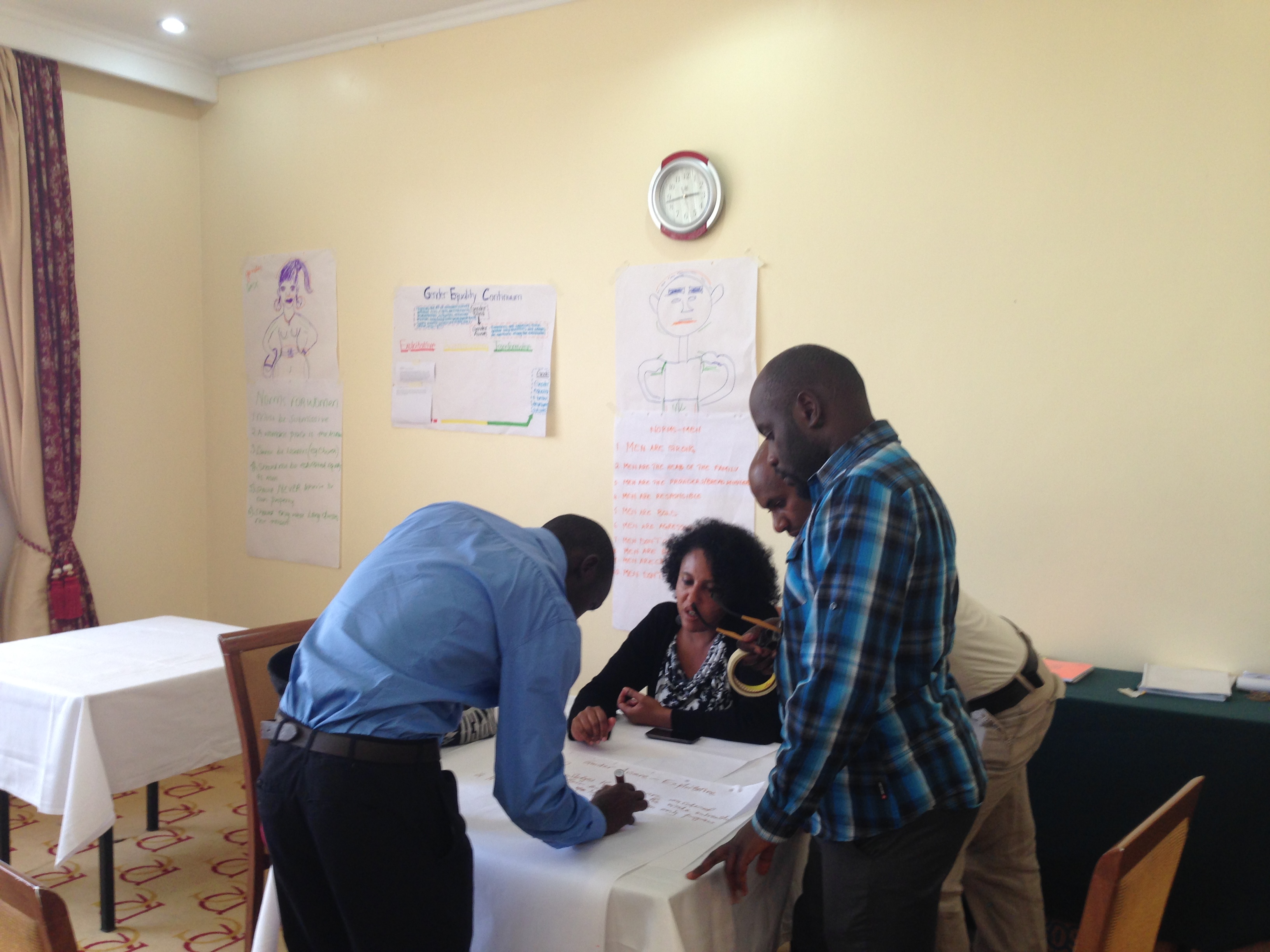Written by Robyn Dayton, Gender Advisor, LINKAGES
Programming for key populations is unique. It is uniquely challenging — in the face of the stigma, discrimination, violence and criminalization that many members of key populations face. And it is uniquely worthwhile — as USAID and others have noted, “There is no way toward an AIDS-free future without targeting approaches toward these highly marginalized and often hard to reach populations.” Despite this uniqueness, there are strategies that work with the general population that are also of value for key populations. One of these is gender integration, which has been shown to improve results and sustainability in HIV programming [1].
Yet systematic gender integration is rarely applied in programming for key populations [2]. So does it matter whether we integrate gender into programming for sex workers, men who have sex with men, people who inject drugs and transgender people?
A recent LINKAGES gender analysis in Kenya — which will be profiled in more detail in subsequent blog posts and has already helped us identify Key Population Heroes — has provided some simple and concrete answers to this question. (Spoiler alert — the answer is yes. Gender integration for key populations, even in countries with advanced programming like Kenya, does matter!)

First, and most simply, gender integration for key population programming makes sure no one is forgotten. When you take a gender perspective, you make sure that everyone, disaggregated by gender, is getting what they need. You ask, for example, does this sex worker program meet the needs of female sex workers, male sex workers and transgender sex workers? In Kenya, transgender people are not officially a key population and are, therefore, largely overlooked. The gender analysis created a space to discuss this explicitly and sparked conversations between government and the transgender community to ensure that services are also tailored to this important group.
Second, a gender perspective helps identify the gender norms and beliefs (however untrue) that lie at the root of the stigma, discrimination and violence key populations face. In Kenya, gender analysis respondents (health care workers, program managers, government officials, and representatives from each key population) identified the belief that “female sex workers are bad mothers” as a justification of violence, a reason women hide that they engage in sex work and a cause of stigma and discrimination in health care settings. How powerful would it be if programs directly countered and challenged harmful beliefs like this one — for example, by offering child vaccination services at sex worker-friendly clinics or developing messages to encourage adherence to antiretroviral drugs that acknowledge the important role that female sex workers play in their families and communities?
Third, a gender perspective may help explain why some groups of individuals are missed by key population programming. The belief that “only men should get high” was seen by gender analysis respondents as both pushing women who inject drugs further underground and limiting programmers’ perception that women need services for people who inject drugs.
And finally, gender integration connects key populations and the issues they face to those of the broader population and creates opportunities for combined efforts. In Kenya, respondents identified the harmful belief that men who have sex with men and transgender women “degrade themselves when they act like women.” It seems hard to spell out more clearly the link among homophobia, transphobia and misogyny (i.e., contempt for women) or to make more evident an opportunity for collaboration between activists working toward women’s equality and those focused on ending stigma and discrimination against men who have sex with men and transgender women.
So yes, gender integration has a role to play in key population programming. And perhaps — because a gender perspective can help identify 1) individuals not yet reached with services; 2) the gender norms and beliefs behind stigma, discrimination and violence that need to be challenged and changed; and 3) opportunities for collaboration beyond key population programming — gender integration is actually uniquely valuable in this context.
If you will be in Durban for AIDS 2016 and want to hear more about the ways that gender norms and beliefs affect the violence experienced by key populations or other innovations and information on programs for key populations, we hope you’ll check out our FHI 360 booth or save space in your conference agenda for LINKAGES poster presentations and satellite symposiums. Also, stay tuned for the forthcoming The Link, which will be available later in July!
Endnotes:
[1] Barker GT, Ricardo C, Nascimento M. Engaging men and boys in changing gender-based inequity in health: evidence from programme interventions. Geneva: World Health Organization; 2007. Boender C, Santana D, Santillán D, Hardee K, Greene ME, Schuler S. The “so what?” report: a look at whether integrating a gender focus into programs makes a difference to outcomes. Interagency Gender Working Group Task Force, Population Reference Bureau; 2004. Rottach E, Schuler SR, Hardee K. Gender perspectives improve reproductive health outcomes: new evidence. 2009. [2] Spratt K. Integrating PEPFAR gender strategies into HIV programs for most-at-risk populations. 2011.